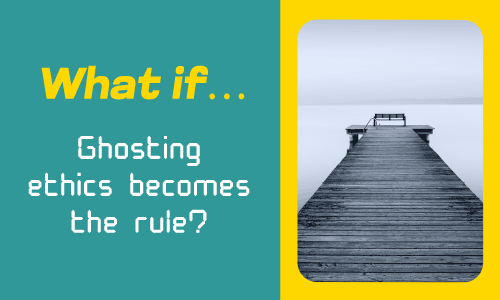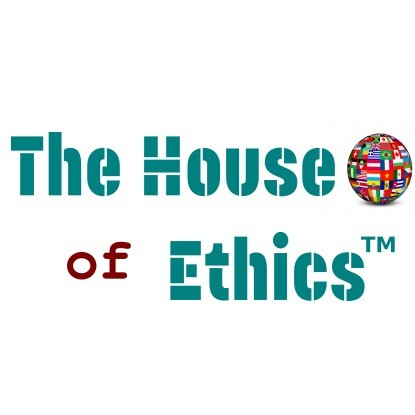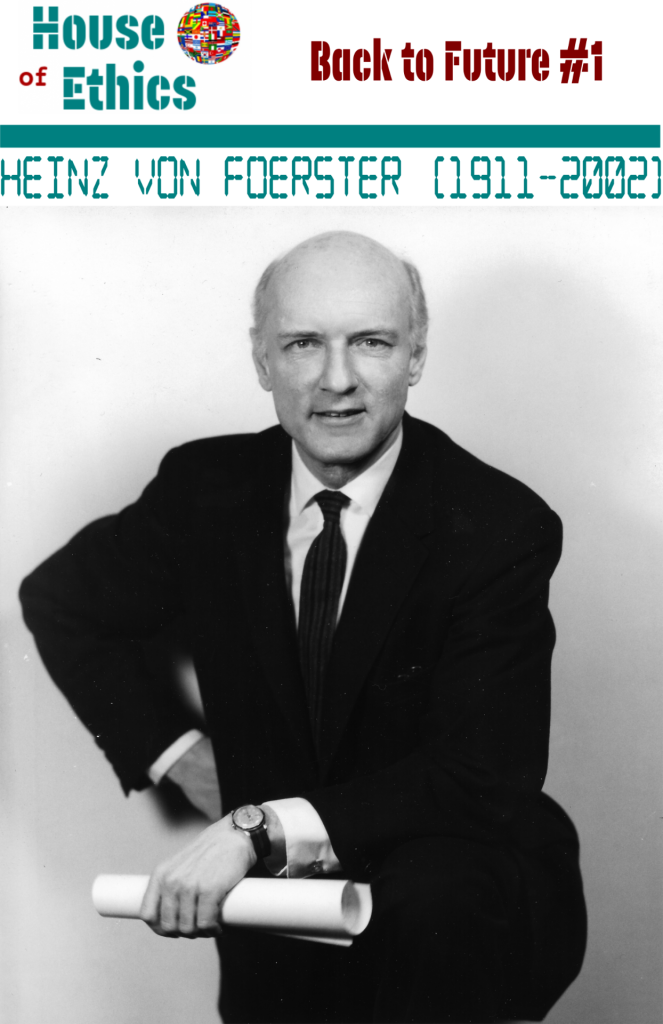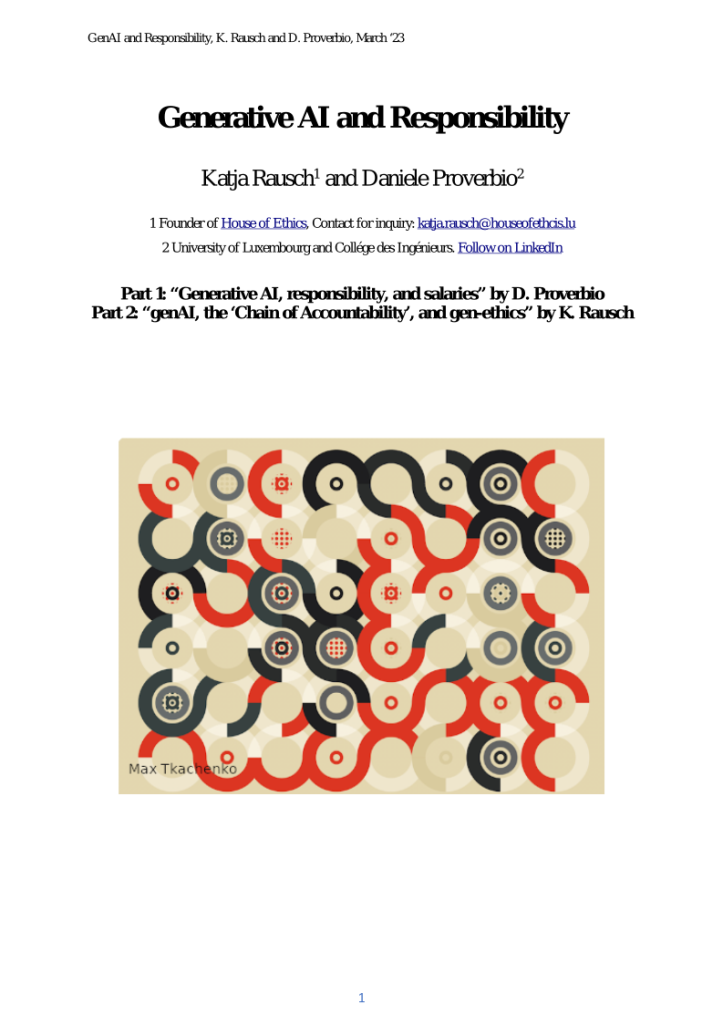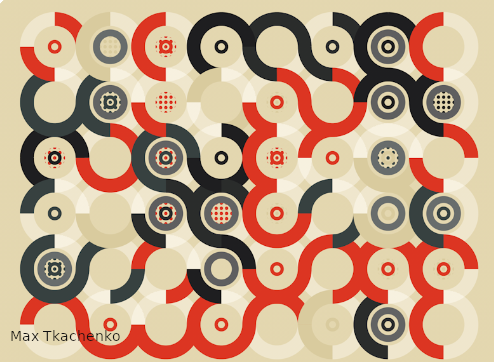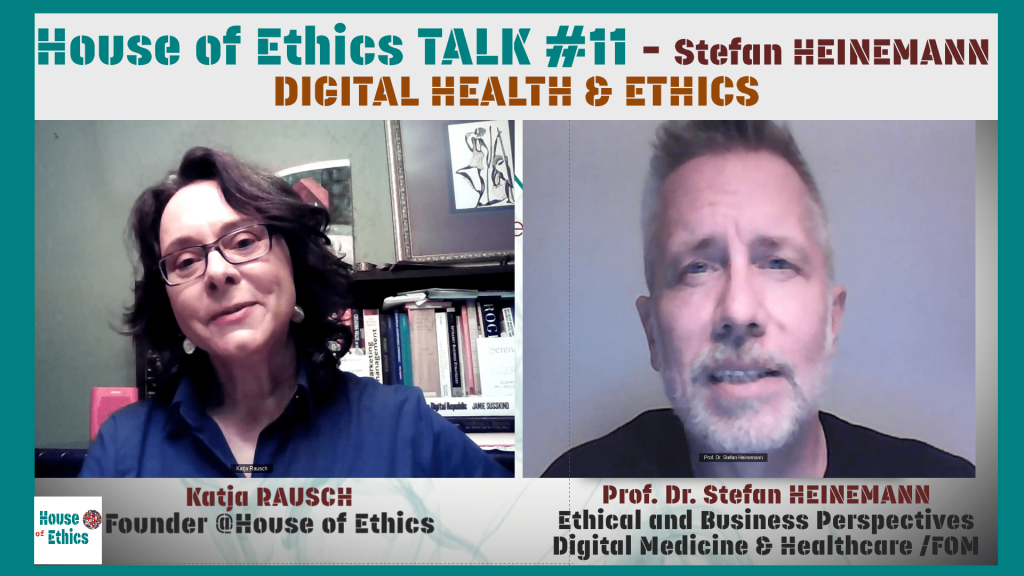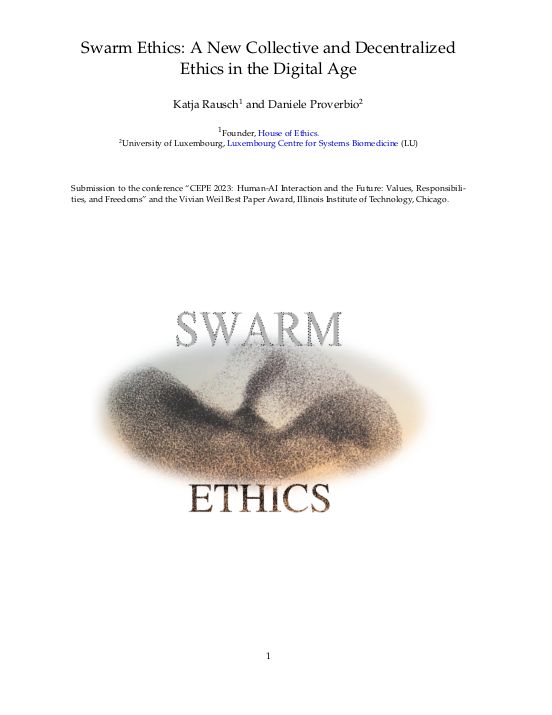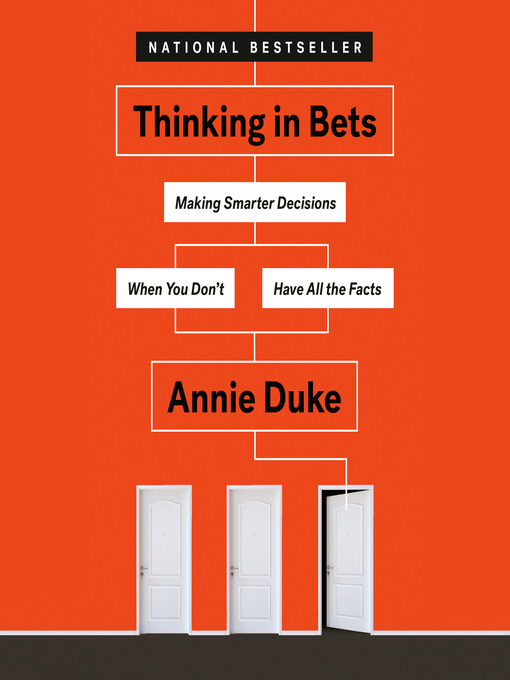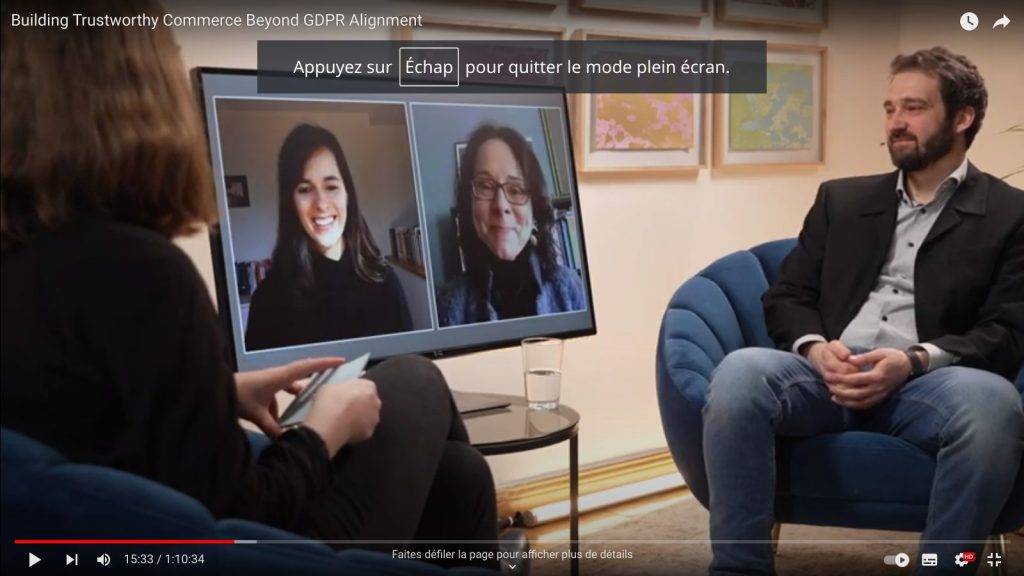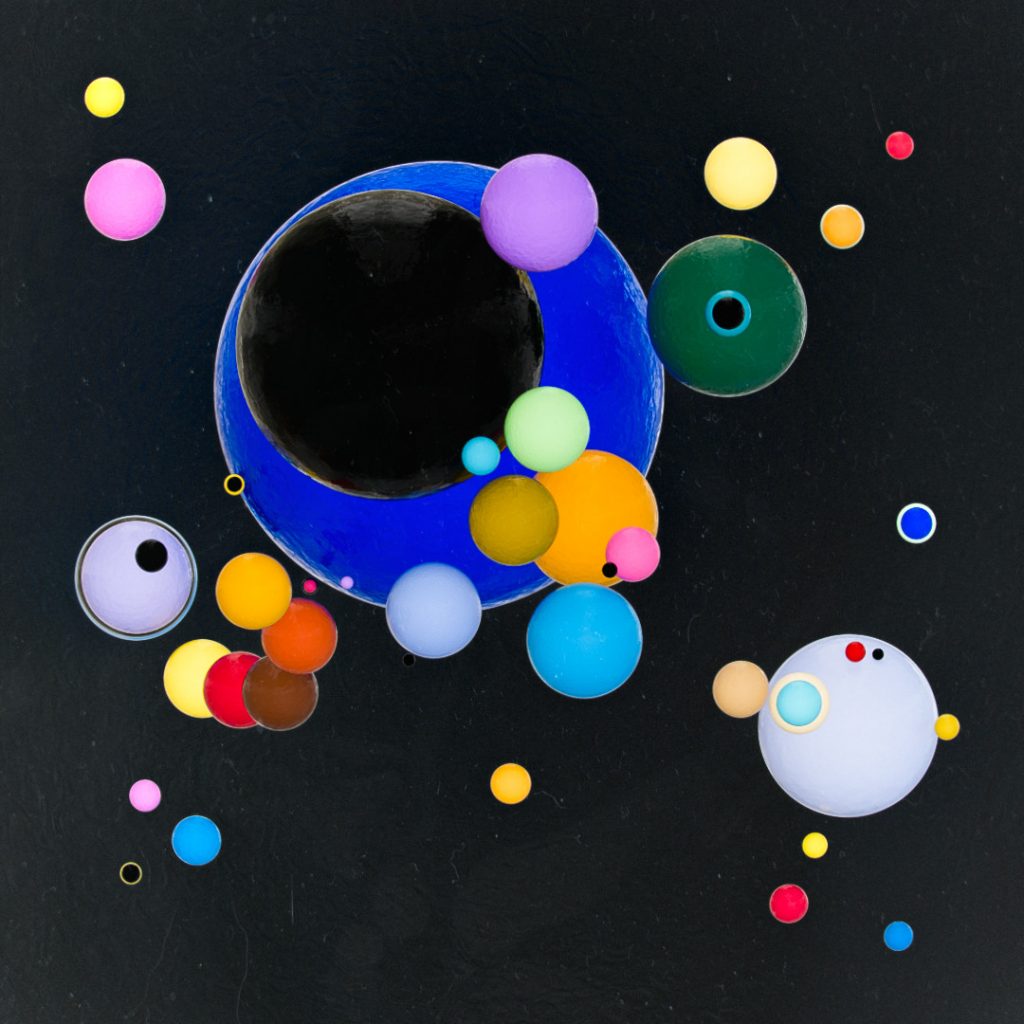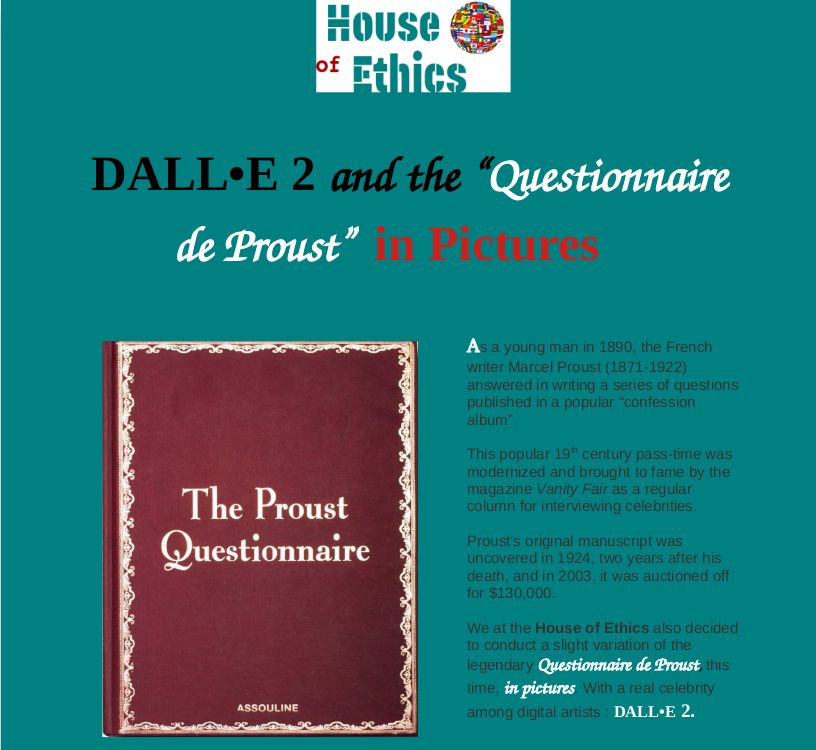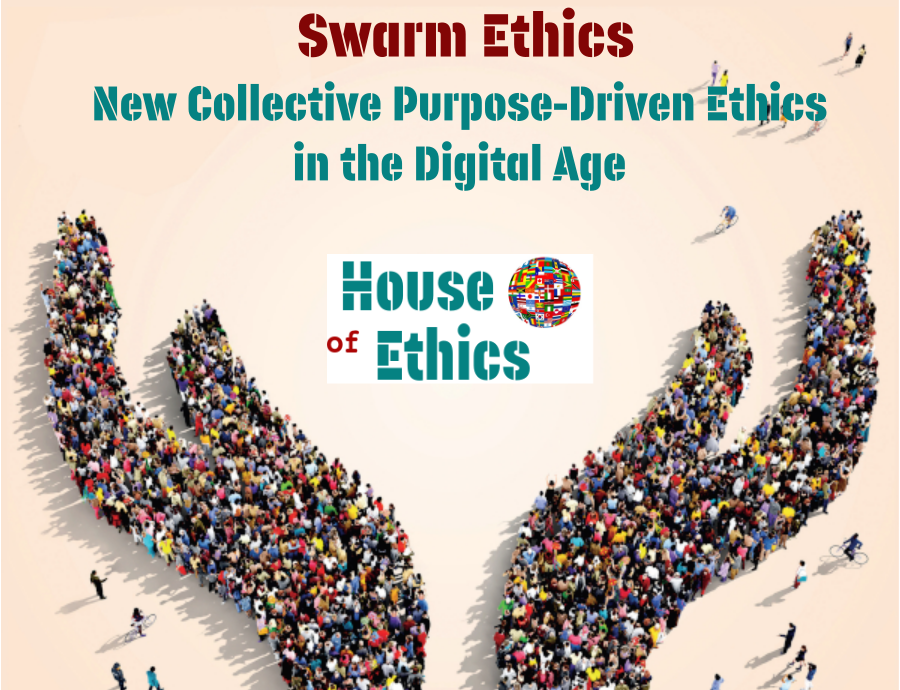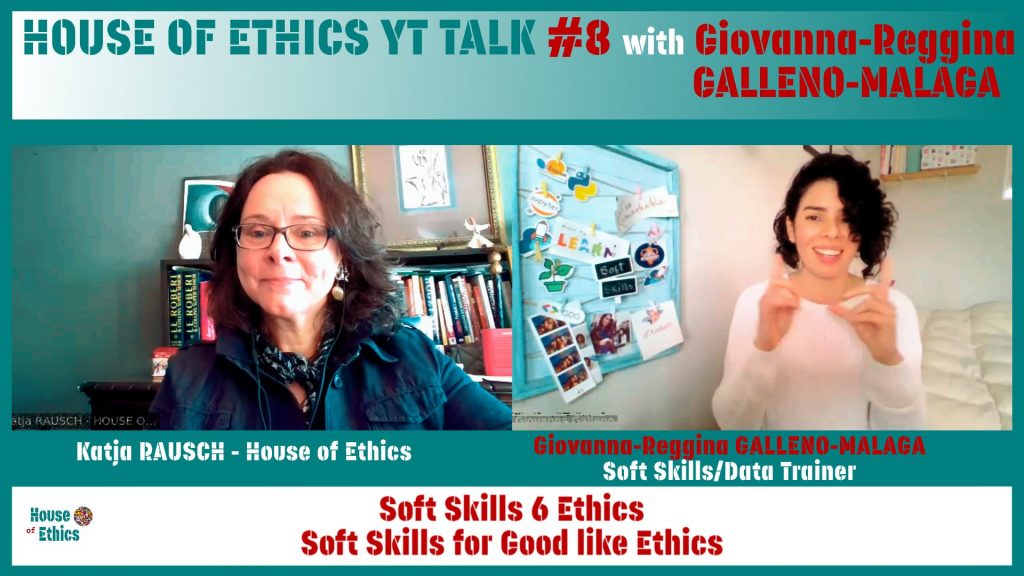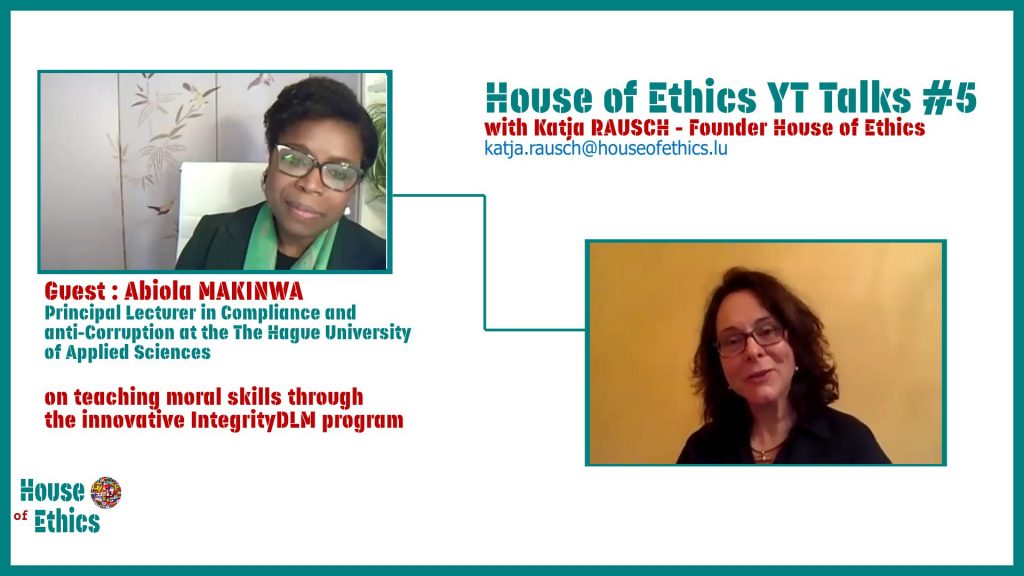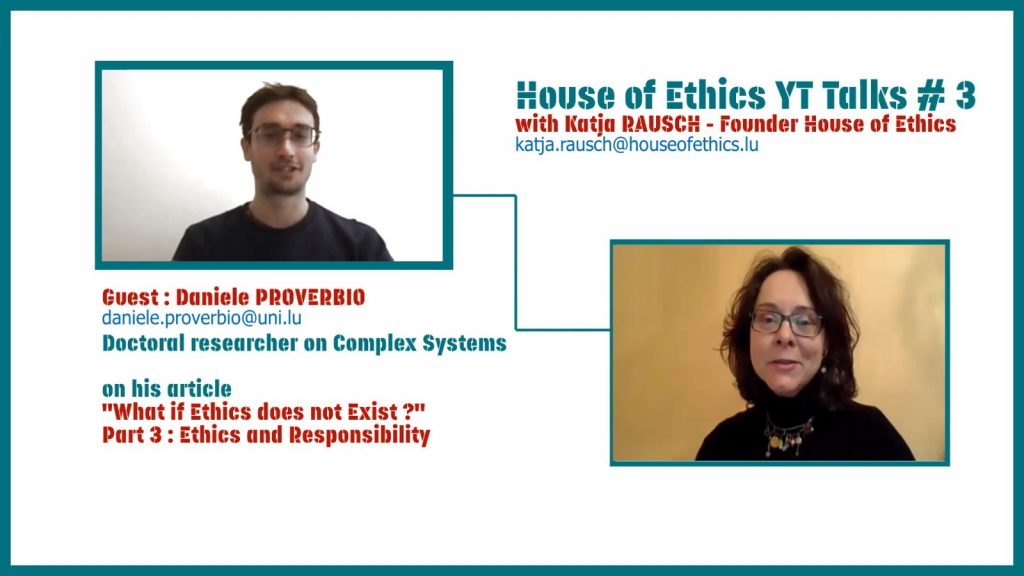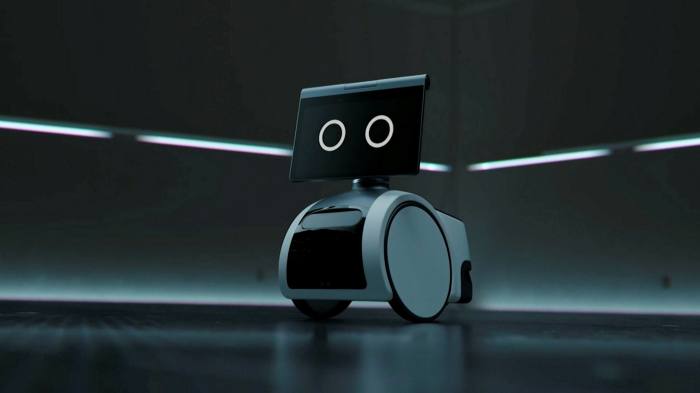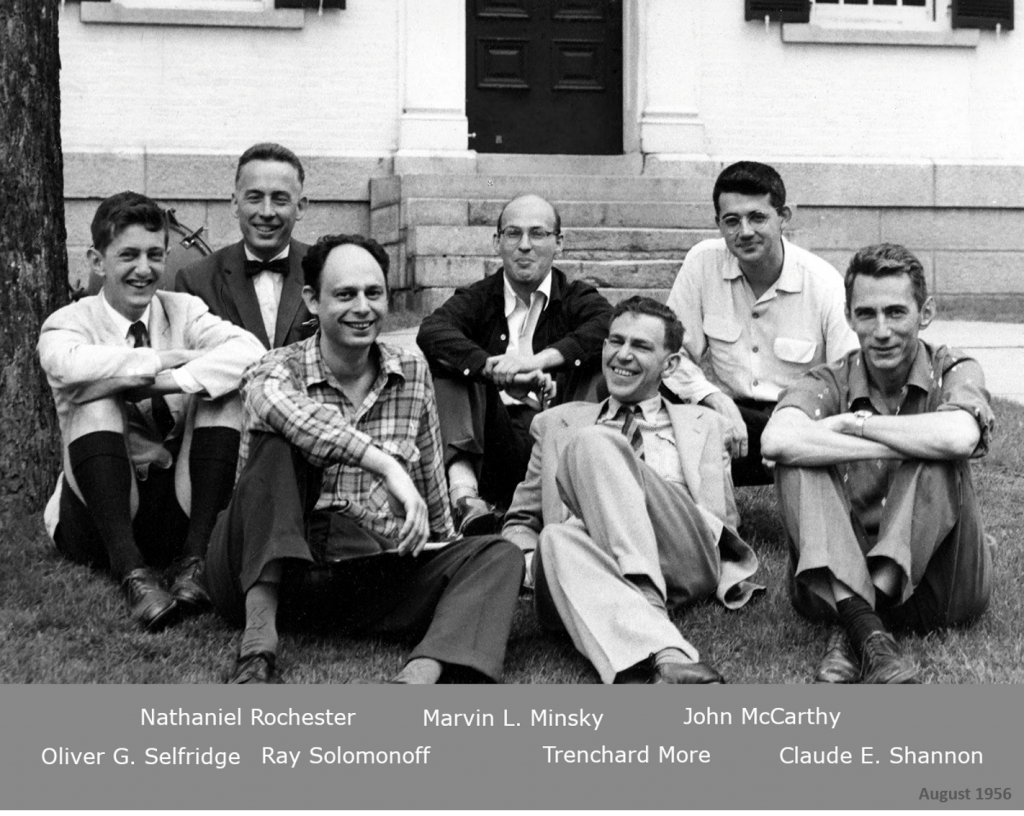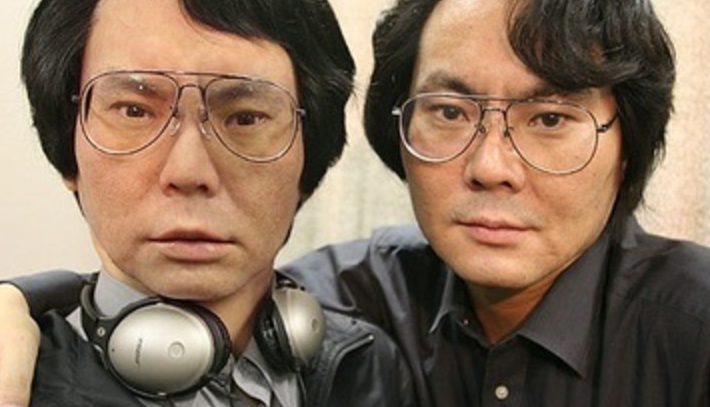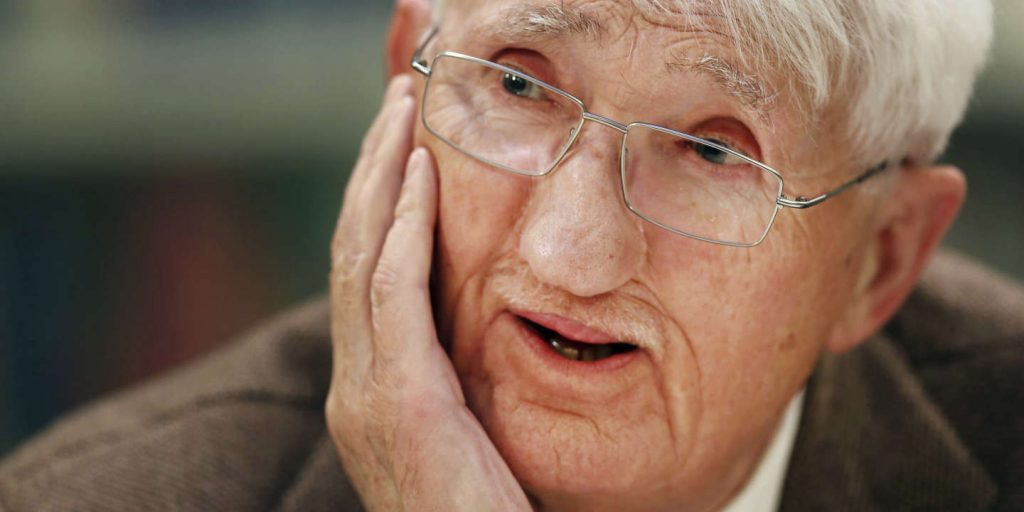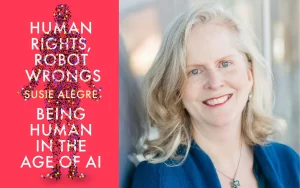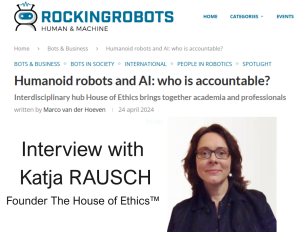HEINZ VON FOERSTER (1911-2002)
Austrian-American “Weltmensch”
Born in the imperial Vienna in 1911, Heinz von Foerster, was throughout his long life blessed with the legendary Viennese flair and humor. He described himself as a “citizen of the world”, a “Weltmensch”.
As a physics student, he belonged to the bohemian intellectual Wiener Kreis (Viennese Circle), a cross-border group of avant-garde thinkers in philosophy, social science, mathematics, logic and anthropology.
In 1949, he left Vienna for NYC on an invitation by his U.S. friends. In his small bag, he carried few clothes but 5 copies of his PhD thesis “Das Gedächntis. Eine quantenphysikalische Untersuchung” (“Quantum mechanical theory of memory”).
And not a single word of English.
Even though, he did not speak English, he held a lecture at the Medical School in Chicago, on Warren McCulloch’s, the prominent neuropsychiatrist, invitation.
As a “citizen of the world”, he just made the English words up, as he recalls in “Fraktale einer Ethik” (“Fractals of ethics”). His audience, a crowd of famed scholars was terribly amused by his performance, and they soon invited him to switch to German, since nearly everybody came from across the Atlantic. This episod he funnily recalled as a “tour de magie” (a magician’s trick) prooved how fearless, ingenious and versatile of an adventurer he was.
Ethics vs Moral
For HVF there is no good nor bad. These are “semantic traps”. The crucial question lies in communication, in the transmission of the message, how can I make somebody understand / hear what I understood / heard?
According to HVF, there is a major difference between ethics and moral.
Ethics is without rules. Only moral has rules.
Moral is a “coercive machine” (“Zwangsmachine”).
Moral is dictated by… to. It always tells the other one what to do or not to do. Like the moralists who instill the “We are the good ones. Only we do good.”
Whereas ethics is from us… to us.
Ethics needs togetherness. There would be no need for ethics on a desert island. Ethics is the behavior that makes me responsible for an action.
It is seen, understood, applied, through the eyes of others. If I see myself through the eyes of an algorithmic program, it alters my own perception of myself. If the impact is negative or it harms me physically or phsychologically, it needs to be ethically assessed.
The “ethical imperative”
Von Foerster’s ethical imperative vs Kant’s categorical imperative is packed in the maxim
“Act always so as to increase the number of choices.”
“Handle stets so, daß die Anzahl der Wahlmöglichkeiten größer wird.”
It simply implies that the more choices you have to decide, the better the decision will be.
In the case of a dilemma. By definition, one only has two possibilities. So HVF suggests to search for more possibilities, solutions, ideas, to increase the number of choices and get out of the classical dilemma scheme.
Like lateral thinking by Edward de Bono. Or a negociator’s technique to solving critical situations in politics or business.
Or a simple brainstorming in management.
He clearly advocates for opening up our mind. Firmly believes in interdisciplinarity. Being an “expert” does not help. His mantra in life was: open up, be curious, embrace the New.
Fractals of ethics
With “fractals of ethics”, the poet, philosopher and mathematician HVF illustrates how any of our ethical actions that we perform is endlessly repeated within our own system, by each word, each action or each thought.
The importance of language
Language is used to describe reality, one’s reality, and it is also used to formalize, to explain, to code. If at the very beginning language is not neutral, which it certainly is not, thinking isn’t either.
For HVF all computoral process is an operation by which external data is processed, compared, added, subtracted, reset in a program. The output is the result of a mathematical reduction that controls the operation.
For von Foerster, not the process itself is the common denominator for computer/brain thinking, but the language or coding, is the binding link. It has the same structure. The same syntax.
What about bias?
Once this has been put forward the subsequent question of bias arises. Biased data, biased thinking, thus biased algorithms that find their origin in our system of communication, verbal language.
Especially when it comes to values, to ethics. The concern is double. First, the language used, then the interpretation, the assessment.
Don’t ask WHAT is cybernetics, ask WHEN is cybernetics?”
“Definitions are no good.”
“Don’t ask WHAT is cybernetics, ask WHEN is cybernetics?” was HVF’s famous response to a young journalist when asked about what cybernetics is.
Cybernetics is a way of looking at things. Cybernetics is the observation of a circular system happening. Like a dialog, for example.
Claude Shannon’s communication theory based on the “sender-message-receiver-sender” paradigm is a cybernetic system. A system with a feedback loop.
The circle of life is about cybernetics.
HVF distinguisehes two orders.
“The observing observer” of the system. This is First-order cybernetics.
And Second-order cybernetics, “The observed observer”. In this case, the observer is part of the system being observed. In psychology, an auto-analysis, for example.
It is probably for his theory on Second-order Cybernetics, the “Observing the Observer” that HVF is best known.
To be a “cybernethicist”(“KybernEthiker” )
Nothing happens without ethics. Observing a system, learning to understand a circular system, and finally understanding the system, is about dealing with the “otherness”.
Be it human beings, animals, nature, any human action requires ethical action. It always implies a certain questioning of how to be an active part of this circular system, and not a system breaker.
It goes for ecology. Science. Communication. Politics. Healthcare. Technology… AI. Everything is de facto human-centered. And so is ethics. And so must be AI.
The computer separates and organizes
HVF firmly believed that the cognitive system of a human brain is not equivalent to that of the computer. And never will be. His argument: humans are a biological system, machines not. A computer never will be.
We choose. Computers separate.
The computer separates and organizes the sensory stimuli or sensor data in an order system defined by the programmer. Eventually creates new ones.
Data processing in the human brain takes place by distinguishing and classifying various sensory stimuli into an emerging (or learned) category system.
The data processing in the human brain, in contrast to that in the computer, is not explained in a purely formal logical way, but through the ability of the decision taking that enables the possibility of a founded interpretation.
This aggregated view by the brain forms the basis for decisions that lead to conscious action. Our actions are intentional.
The action of the computer is not an act, even though it is in connection with the act of the initial instigator.
Radical constructivism:
Not “Tell it like it is”
BUT “It is like I tell it”
For HVF, the quintessential question of reality is linked to “how to modelize values” and “what is the starting point of a formula”?
Constructivism (based on von Glaserfeld’s theory from 1970) was most important for Von Foerster’s work on artificial intelligence and algorithms.
The emphasis in radical constructivism focuses on the individual learner as a constructor. Von Foerster used to put it into a simple formula: It’s not “tell it like it is” but “It is like I tell it”.
WE are constructing our reality.
Bias in algorithms
Can reality be objective?
What about values?
Should we formalize a subjective view into an objective formula?
Consequently, this triggers reflexions on current debates about bias and discrimiation in algorithms.
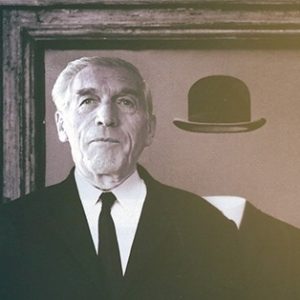
Most important influence: Ludwig Wittgenstein
The Austrian philosopher and linguist Ludwig Wittgenstein was a relative of HVF, and the two men frequently met at the Wiener Kreis.
HVF admitted of knowing by heart every single line (and the numbers) of Wittgenstein’s Tractatus logico-philosophicus.
For those who have not read the Tractatus yet, it consists of 526 declarative statements, like maxims, short and long. Each statement is numbered. No explanation given. It is written in a brief, self-explanatory style.
HVF’s cognitive work on Second-Order cybernetics and radical constructivism completely resonates with Wittgenstein’s construct between reality and words.
Wittgenstein wrote the Tractatus during his Italian captivity in World War I. It entirely focuses on the triad language-meaning-reality. On how WE build reality. On how WE conceive, perceive reality.
About ethics
In Wittgenstein’s work, HVF found echo to his own personal view on ethics: ethics is implicit.
Ethics cannot be articulated.
Ethics must be acted.
“It is clear that ethics cannot be articulated”.
“Es ist klar dass sich die Ethik nicht ausprechen lässt”. Tractatus 6.421
Thus ethics is self-explanatory like the statement “it is clear”. Since it is clear it does not need any explanation.
Ethics for HVF is a tautology.
In 1991, when asked to hold a conference on “Ethics and Second-Order Cybernetics” in Paris, HVF declared in his opening statement:
Ladies and Gentlemen:
[…] And I am impressed by the ingenuity of the organizers who suggested to me the title of my presentation. […] To be honest, I would have never dared to propose such an outrageous title …[…] Before I left California for Paris, others asked me full of envy, what am I going to do in Paris, what will I talk about? When I answered “I shall talk about Ethics and Second-Order Cybernetics” almost all of them looked at me in bewilderment and asked, “What is second-order cybernetics?” as if there were no questions about ethics. I am relieved when people ask me about second-order cybernetics and not about ethics, because it is much easier to talk about second-order cybernetics than it is to talk about ethics. In fact it is impossible to talk about ethics.
It is impossible to talk about ethics
A strange position when observing our vivid debates on ethics today. But at the end, isn’t the best doctor the one who has no returning patients.
The best case scenario for ethics wouldn’t it be never to need ethicists anymore; since it would be as obvious as breathing. One doesn’t ask why and when one should breathe. One is just breathing!
Best friend: Paul Waszlawick
“The belief that one’s own view of reality is the only reality is the most dangerous of all delusions.”
Paul Watzlawick (1921-2007), the famous psychologist, was, like Von Foerster Austrian. Watzlawick was one of the most influential figures at the Mental Research Institute, taught at Stanford and was with Heinz von Foerster a prominent spokesman of radical constructivism.
He worked on the essence of reality, the constructed models of reality as asked in his book “How real is reality”?
Both men were linked by a limitless sense of humour and real bienveillance, good-will towards others. Their discussion on ethics, its intangible character, and other endless discussions deepened, developped and influenced each other’s work.
Watzlawick was famous for his 5 step communication theory with the first principle, the now famous “One cannot not communicate”.
He also pointed at the origin of miscommunication when not everybody is speaking the same language. His findings were based on cybernetics. The causality of a circular communication system (sender-receiver-sender), and the idea of feedback loop.
Watzlawicks favorite joke to explain his lifetime work answering the question “What is real ?” was the one about Formidable, which he told at numerous conferences.
– FORMIDABLE –
For years, a French couple was desperately trying to have a child, it was their deepest desire. Until one day, the woman unexpectedly became pregnant.
So immeasurable was their happiness that the couple promptly decided to name the child “Formidable”.
But unfortunately the boy was too small, too weak and too ugly. The boy was constantly nagged and he suffered troughout his life because of his unfortunate name. Even if Formidable had a wonderful marriage, a wonderful wife, and was a loving father.
On his last days, he gently asked his wife for a last favor : « Please my Darling, don’t mention my name on my tombstone. It had been a lifelong burden. »
The man dies and the woman accordingly put the following words on the grave : “Here lies a man who has always been loyal to his wife and a loving father.”
A couple of passers-by read the inscription, paused and said :
“Oh look that’s Formidable !”
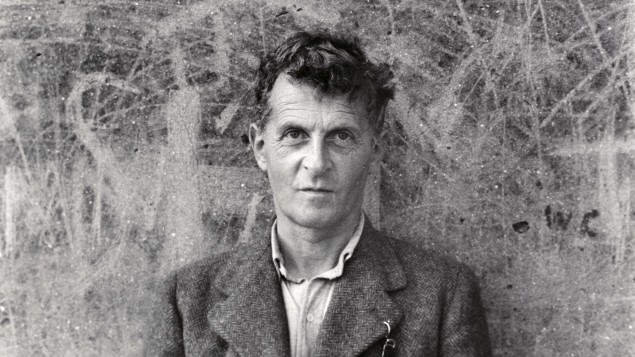
The importance of Magic
As a boy, Heinz von Foerster always wanted to become a magician. Throughout his life he was inventing tricks and ideas.
With his cousin Martin Lang he created FÖLAG, Foerster-Lang-Zaubergesellschaft, the two boys being director and president. Magic influenced his entire life and defined his relation to reality.
As a magician, you create a world, an atmosphere, a context, where new experiences happen.
But everything happens in our mind – the elefant or the rabbit disappears suddenly. This triggered later a maxim:
The receiver, the listener determines the importance of a statement. It’s about the construction of a world.
To be a “Curiousicist” (“Neugierolog”)
One of his favorite words
Panopticum
A global systemic vision
HVF was a lifelong advocate for interdisciplinaritry:
“I don’t know where my expertise is;
My expertise is no disciplines. I would recommend to drop disciplinarity wherever one can. Disciplines are an outgrowth of academia. In academia you appoint somebody and then in order to give him a name he must be a historian, a physicist, a chemist, a biologist, a biophysicist; he has to have a name.
Disciplines are side effects of institutional situation.” Source
Prolific author
HVF wrote nearly 200 papers. On computer science, epistemology, artificial intelligence, high-speed electronics, electro-optics, biophysics and cognitive science.
The list of his titles was as long as the list of his articles. Totally inclusive with young and old, academics or non-academics, HVF was a listener and a gifted storyteller, as one can read and hear in his numerous books and interviews.
In the video below his introduction lasts 2:16 minutes, the time needed to list all his titles.
Here a short-cut: From 1951-1975, he was a professor of electrical engineering at the University of Illinois at Urbana–Champaign, then professor of biophysics (1962–1975) and Director of the Biological Computer Laboratory (BCL, 1958–1975).

- Founder HOUSE OF ETHICS
- Author's Posts
Katja Rausch is specialized in the ethics of new technologies, and is working on ethical decisions applied to artificial intelligence, data ethics, machine-human interfaces and Business ethics.
For over 12 years, Katja Rausch has been teaching Information Systems at the Master 2 in Logistics, Marketing & Distribution at the Sorbonne and for 4 years Data Ethics at the Master of Data Analytics at the Paris School of Business.
Katja is a linguist and specialist of 19th century literature (Sorbonne University). She also holds a diploma in marketing, audio-visual and publishing from the Sorbonne and a MBA in leadership from the A.B. Freeman School of Business in New Orleans. In New York, she had been working for 4 years with Booz Allen & Hamilton, management consulting. Back in Europe, she became strategic director for an IT company in Paris where she advised, among others, Cartier, Nestlé France, Lafuma and Intermarché.
Author of 6 books, with the latest being “Serendipity or Algorithm” (2019, Karà éditions). Above all, she appreciates polite, intelligent and fun people.
-
The proposed concept of swarm ethics evolves around three pilars : behavior, collectivity and purpose
Away from cognitive jugdmental-based ethics to a new form of collective ethics driven by purpose.
